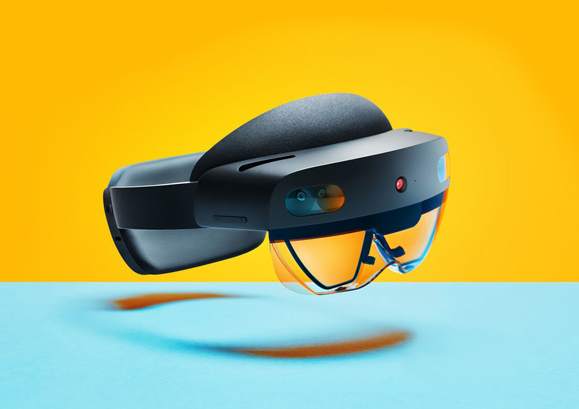The Microsoft HoloLens 2
Research article  Open access |
Available online on: 23 October, 2019 |
Last update: 28 October, 2021
Open access |
Available online on: 23 October, 2019 |
Last update: 28 October, 2021
 As part of its efforts to improve lives of people with Disabilities (PWDs) and the Elderly, Mada Center works with various innovators to develop an ecosystem that is supportive of innovating technological solutions that promote digital access for PWDs. In addition to that, Mada has taken the responsibility of introducing and promoting latest assistive technology solutions that can make a difference for PWDs and the elderly.
As part of its efforts to improve lives of people with Disabilities (PWDs) and the Elderly, Mada Center works with various innovators to develop an ecosystem that is supportive of innovating technological solutions that promote digital access for PWDs. In addition to that, Mada has taken the responsibility of introducing and promoting latest assistive technology solutions that can make a difference for PWDs and the elderly.
The Microsoft HoloLens 2 is a pair of mixed reality smart glasses developed and produced by Microsoft.
The second-generation HoloLens uses a series of cameras and sensors to capture the environment around the user and project holographic 3D images on top of the real world. With these 3D holographic projections, users can control and interact and perform tasks or play games. HoloLens 2 and other mixed reality projectors have several applications such as real-time training, reports, analytics, remote guidance and prototyping.
HoloLens 2 does not rely on any external controllers, unlike most of the Virtual or Augmented Reality headsets which are available on the market. Instead, using Windows Cortana, it leverages hand and voice controls and gestures. In the latest version, HoloLens 2 can recognize more than twenty articulation points per hand, enabling precise and more realistic hand movements.
HoloLens 2 is also capable of tracking the eyes of a user with sensors near the device’s nose ridge. If the headset is shared, the device can remember individual users and retain individual user settings and preferences.
The current HoloLens headset is based on a combination of user interaction hand gestures. However, by adopting an eye tracking system, Microsoft would either completely drop hand gestures or use them in combination with the gaze. This would make HoloLens 2 more accessible to people with disabilities who may find it difficult to use their hands to control the device.
Integrated eye tracking would give a HoloLens 2, or any other head-mounted display (HMD), a whole new method of input to interact with the display content. The HMD could track the gaze of a user to adjust the display of content, while allowing users to use their eyes to input commands.
An interesting set of applications of HoloLens 2 emerges when it is used with Dynamics 365 Remote Assist, a product line of enterprise resource planning and customer relationship management applications released by Microsoft:
- Empower technicians to solve problems more efficiently by working together from various locations through Dynamics 365 Remote Assist.
- Share what you see with employees in remote locations to stay hands-on with your work while you get the help you need.
- Bring employees together in multiple locations with a real-time view of a problem to effectively troubleshoot and reduce costs.
- Do a remote hands-on training for people with all abilities.
- Trainers can work on the devices they are already using from anywhere.
Mixed reality in the current digital world can be a game-changer. Microsoft can certainly have an impact on a global scale with the immersive, ergonomic, and instinctual features offered by HoloLens 2. For us in Mada Center, we expect further development down the line because the project will be open source, meaning that we could see Arabic supported applications targeting people with disabilities.
